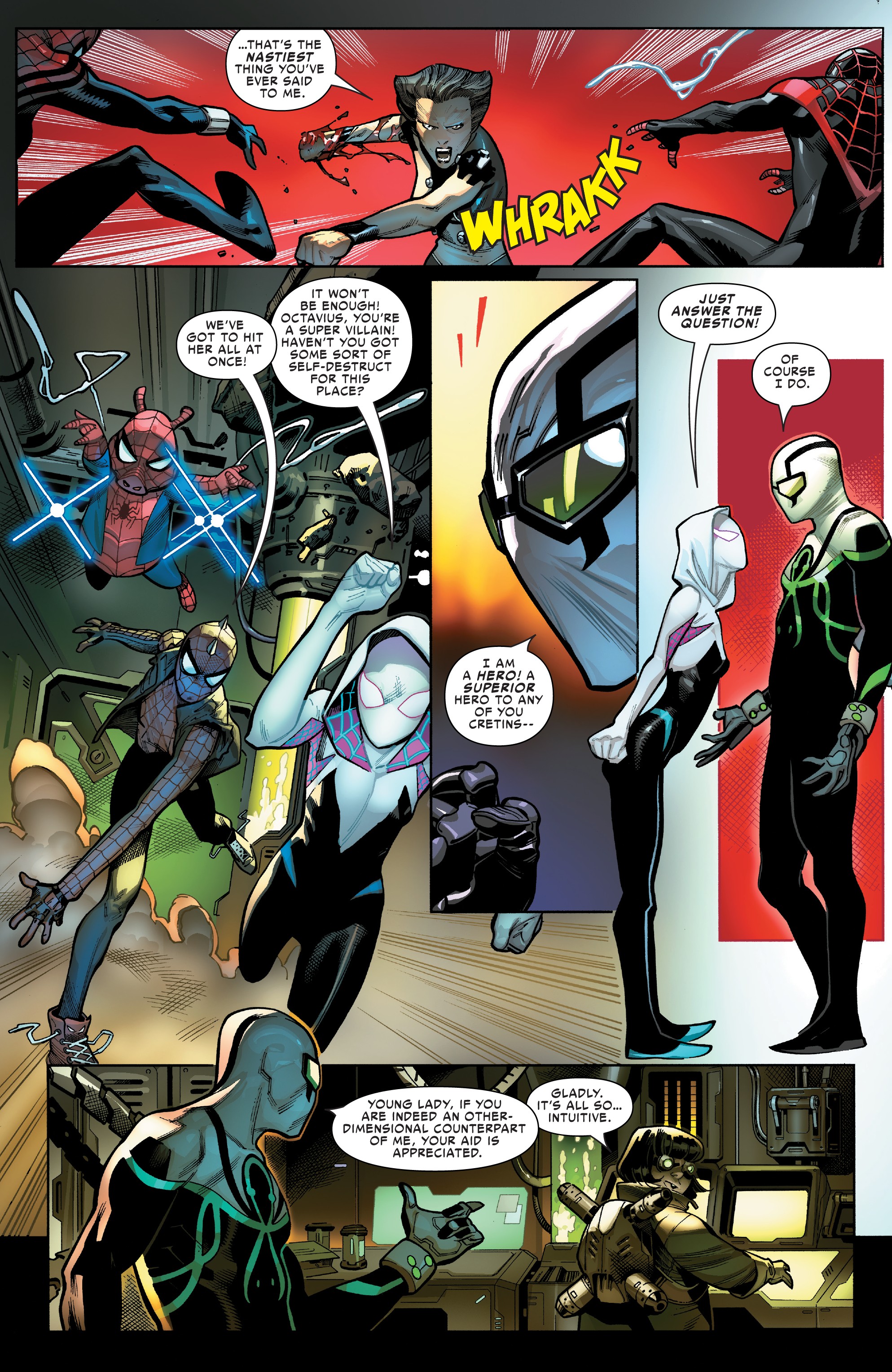Spider-Geddon #2 // Review
When writing a sequel to an event or story, the stakes often have to be raised. For Civil War turning into Civil War II, it went from the actions of heroes and villains to actions they may take in the future. DC has had their own gauntlet of ever-increasing bigger events in their Crisis crossovers. When it comes to Spider-Geddon issue 2, Marvel has taken the interesting twist of making things smaller. And yet, it works incredibly well to up the stakes in a more personal way.
Christos Gage and Jorge Molina return as writer and penciller for the second issue of the event. Jay Leisten, Craig Yeung, and Roberto Poggi all join forces Voltron-style to cover the inking of the book, while David Curiel and Travis Lanham take the jobs of colorist and letterer respectively.
The Inheritors are back, and it’s up to an increasingly shrinking crew of Spider-persons (and -ham) to stop them. Unfortunately, two of the leaders from the last crossover, Spider-UK and the Noir Spider-Man, have both been killed off within seconds. This leaves the former super villain, Otto Octavius, to take charge. What results is Otto Octavius’ headquarters exploding, and both sides licking their wounds and building their forces. Unfortunately, while the Spiders need to draw from other realities, the Inheritors have found the cloning machines left behind from a previous storyline, The Clone Conspiracy.
Gage does a great job of building tension while also keeping by things somewhat lighthearted. The entire confrontation at Otto’s is peppered with jabs at how you just can’t take the Supervillain out of him, and seeing Doctor Octopus trying to be heroic during this mess is rather enjoyable. Moments like those are few, with the Inheritors starting another body count, but help keep the story from dropping into gloom and doom like so many other major comic events tend to. It’s a Spider-Man event, and the levity has been part of the character almost since his inception.
Another item worth noting is that a lot of the tie-in issues actually are referenced during this comic. It’s nice to see where they exactly fit, and the brief editors’ notes are certainly appreciated.
As with last issue, Molina’s art is on-point once more. He does a fantastic job working with masked superheroes, focusing instead on body language--and sometimes expressive spider-eyes--to relay emotion and intent, rather than facial expressions. Every Spider-person also has a defined body type, if not a unique silhouette, and it helps set each character apart from one another all the more.
When a book has multiple of anyone under one job, it could mean that the book has been rushed. With three inkers pulling duty, this could well be the case. Thankfully, the content of the book shows no sign of a rushed job, and it is nearly impossible to tell who of Leisten, Yeung, and Poggi did which page. It’s commendable that whatever required multiple inkers not only hasn’t affected the final product, but also looks incredible with Molina’s pencils.
It is still hard to say if this book will surpass the original Spider-Verse, as it is playing for lower stakes and a smaller cast. However, by not going for spectacle, there is a tighter crew who feel more like characters than fodder. At the very least, this alone makes the issue worth reading. If you’re a Spider-fan, it’s easily the best book of his on the rack this week.







